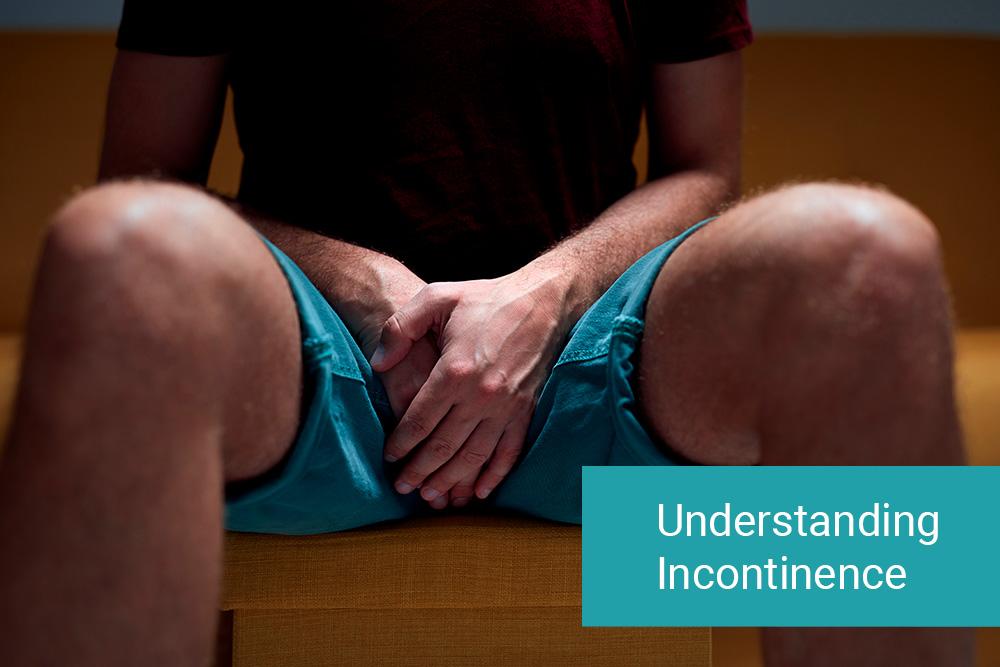
As the body undergoes changes from illness, injury, or just as part of the natural aging process, people sometimes experience incontinence. Defined as a loss of bladder control, urinary incontinence can be stressful, embarrassing, and even life-altering for some people. The embarrassment and shame can become so severe it can make people fearful of social interactions and even afraid of going out in public. This can often lead to social isolation that can, in turn, result in mental health issues such as anxiety and depression.
Incontinence is typically caused by a weakening of the group of pelvic floor muscles that support the bladder in men and the bladder, uterus, and vagina in women. The pelvic floor muscles are located between the coccyx and the pubic bone and consist of the iliococcygeus, coccygeus, puborectalis, and the pubococcygeus muscles, as well as the urethra sphincter muscle that controls the release of urine. While there are treatments, surgeries, and pharmaceutical options, a groundbreaking new therapy for incontinence called Emsella is allowing people to regain control of their bladder and their lives in as little as three weeks.
Understanding Incontinence

Incontinence is a loss of bladder control that results in uncontrollable urine leakage. The condition can affect both men and women of any age but is most common in the elderly and those who have experienced some type of injury or illness that affects either the bladder directly or the pelvic floor muscles that support the bladder. Conditions that can result in incontinence are menopause and childbirth in women and prostate issues in men as well as diseases such as urinary tract infections and muscle damage in both sexes.
The urinary system consists of the kidneys, ureters, the bladder, and urethra. The kidneys filter impurities from the bloodstream, producing urine, and send the waste through the ureters, where the urine is stored in the bladder. When the bladder becomes full, the urge to urinate occurs, and the urine is released through the urethra by intentionally relaxing the sphincter muscle. However, incontinence occurs when the sphincter releases urine accidentally or before you are ready to urinate.
The Types of Incontinence

Six types of urinary incontinence occur for various reasons and at various stages throughout life, and each has different causes and characteristics.
1) Weak pelvic floor muscles cause stress incontinence and is most frequently seen in women who have given birth and men who have prostate issues. It typically occurs when urine leaks from the bladder during some type of stressful physical activity. These activities include, but may not be limited to, running, jumping, or lifting and can also result from coughing, sneezing, or laughing. In short, anything that puts stress on the pelvic floor muscles and results in pressure on the bladder can cause urine leakage.
2) Urge incontinence is sometimes the result of what is referred to as overactive bladder, also known as OAB. Urge incontinence presents as an intense and immediate need to urinate that may come on so fast that it is difficult to make it to the restroom before leakage occurs. Overactive bladder can occur for a variety of reasons, including infection, low estrogen levels, nerve damage, being overweight, and just weakened pelvic muscles resulting from aging. Alcohol, caffeine, and some medications can also cause an overactive bladder.
3) Overflow incontinence results in small amounts of urine leaking because the bladder becomes too full and is often the result of the bladder not emptying completely during urination. The latter leaves less room in the bladder, causing it to fill back up faster. Overflow incontinence is most common in people who suffer from chronic conditions such as stroke, diabetes, severe constipation, or multiple sclerosis and also occurs in men with an enlarged prostate.
4) Functional incontinence results from having some type of physical condition, such as arthritis, that prevents you from getting to the bathroom in time.
5) Bedwetting is most common in children. However, it also affects adults that have medical conditions.
6) Mixed incontinence is a combination of multiple issues that lead to leakage. These can include other types of incontinence, other medical conditions, or a combination.
Treatments for Incontinence
Depending on the type and severity, there are a number of urinary incontinence therapy options available:
• Lifestyle Modifications
Simple lifestyle changes can help address incontinence issues. These include limiting liquids before going out and before bed, reducing or eliminating caffeine, getting more exercise, losing weight, and quitting smoking.
• Bladder Training
Training the bladder includes suppressing urination and trying to urinate on a schedule. Working to establish a regular schedule, also called “timely voiding,” requires you to go to the bathroom at established times and then try to extend that time by a few minutes each time you go. This process helps stretch the bladder to hold more urine and extend the time between bathroom visits.
• Medications
Anticholinergics are a group of medications that may be helpful for treating some forms of incontinence. These drugs include darifenacin, fesoterodine, mirabegron, oxybutynin, solifenacin, tolterodine, and trospium chloride. However, drugs do not have an effect on some forms of incontinence. Additionally, drugs should be seen as a long-term solution in most cases.
• Kegel Exercises
Invented by gynecologist Dr. Arnold Kegel, Kegel exercises are designed to strengthen the pelvic floor muscles to give you increased bladder control. Kegels are:
- Isometric exercises performed by voluntarily contracting the pelvic floor muscles.
- Holding the contraction for a few seconds.
- Releasing the contraction.
- Repeating the process eight to 12 times.
Emsella
Emsella is a new breakthrough incontinence treatment that can begin to show results in as little as a single treatment. The treatment involves sitting in the Emsella chair that sends a harmless, high-intensity, focused electromagnetic pulse throughout the pelvic region. This stimulates the pelvic muscles to simulate performing over 10,000 Kegel exercises in just one 28-minute session! The typical Emsella protocol consists of six sessions performed over a three-week period. However, more sessions may be necessary depending on the severity of the issue.
Treatment Efficacy

The results of Emsella treatments will vary for each individual based on age, sex, and the type of incontinence being addressed. The length of time the results from a full series of six sessions lasts ranges from four to 12 months, with seven to eight months being the average time before the treatment must be repeated. Your healthcare provider can give you an approximation of how long results may last based on your individual situation.
Urinary incontinence affects both women and men of all ages, and in the vast majority of cases, the symptoms of incontinence can be improved or eliminated altogether with treatment. Talk to your healthcare provider to see which treatment option is right for you. If you live in northeast Florida and are ready to give Emsella a try, you can locate a service provider by performing an online search for “pelvic floor therapy in Jacksonville.”
Be Still Float wellness studio offers Emsella in Jacksonville, Florida, in addition to a host of other wellness treatments such as float-tank and massage therapy as well as an infrared sauna and sound healing. Contact Be Still Float at 904-593-2844 or visit them online at bestillfloat.com. (View our specials here.)













